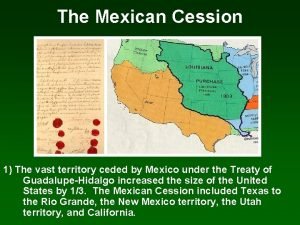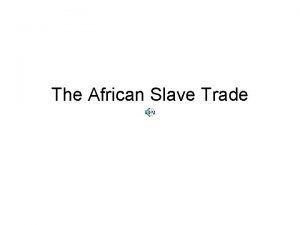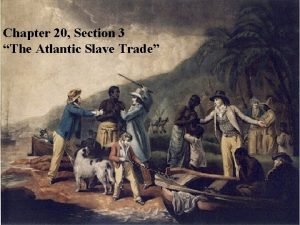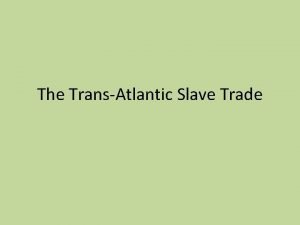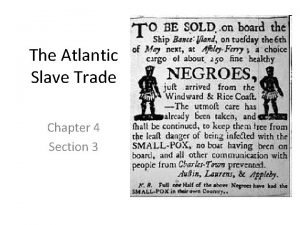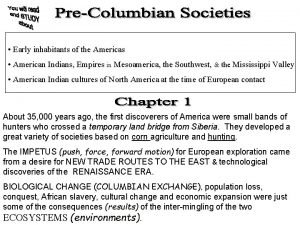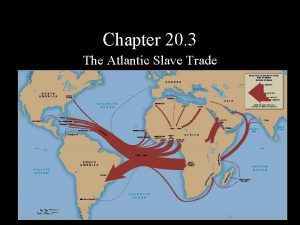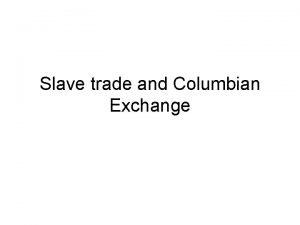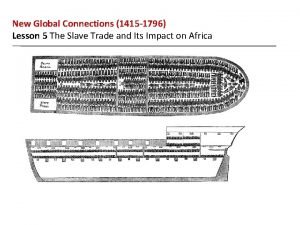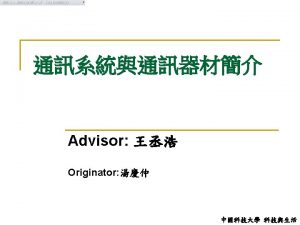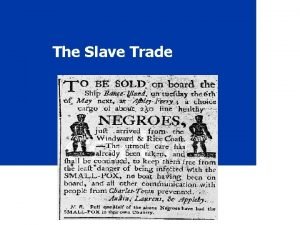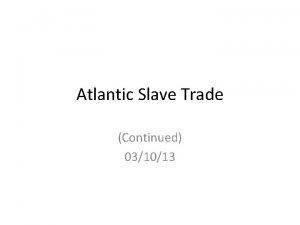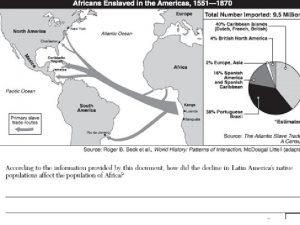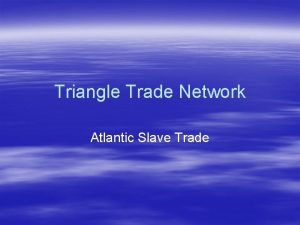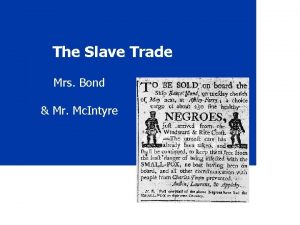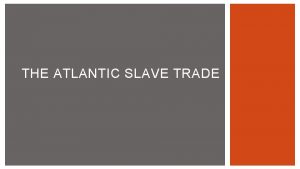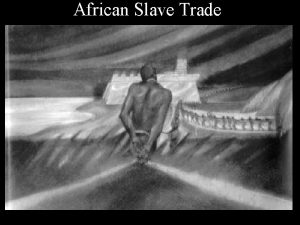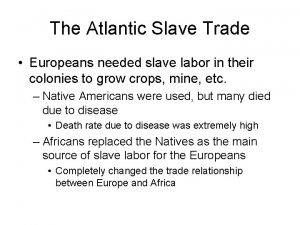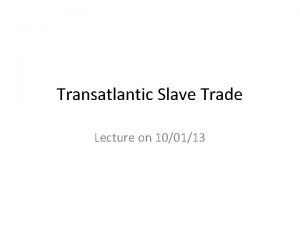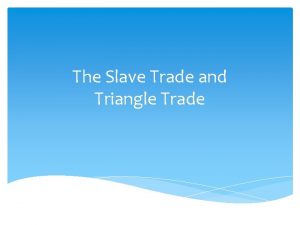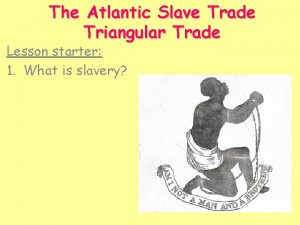The Slave Trade US History Mc Intyre The



















- Slides: 19

The Slave Trade US History Mc. Intyre

The Atlantic Slave Trade When? • 1450 - Spanish & Portuguese start slaving in Africa • 1865 - still smuggling slaves until the end of the civil war (technically illegal in 1808) 2

The Atlantic Slave Trade Why? (3 reasons combined) • Labor shortage (not enough workers) • Ethnocentrism –(feelings of superiority) • Greed 3

The Atlantic Slave Trade Where to? Where from? 5% 60% 65% 35% 4 30% 5%

Number of people enslaved • 30 million taken from their homes • 10 million die during capture phase • 10 million die during middle passage • 10 million survive to make it over the ocean 5

Phases of the Slave Trade Capture: • Most captured 50 -100 miles inland • Tribes often did not have a choice in helping capture neighbors “divide and conquer” 6

Phases of the Slave Trade West African expectations about slavery: • Slaves were not slaves for life • A slave’s child would not be a slave 7

Phases of the Slave Trade Capture: Cape Coast Castle, Gold Coast, 1727 8 Christiansborg Castle, Gold Coast, ca. 1750

Phases of the Slave Trade 2. The Middle Passage • Journey over the Atlantic Ocean • 400 -500 people in a boat with little air & much disease 9

Phases of the Slave Trade 2. The Middle Passage - Tight Pack • Higher mortality, higher profits 10

Phases of the Slave Trade 2. The Middle Passage Loose pack • Lower mortality, lower profits 11

Phases of the Slave Trade 3. “Seasoning” • Brutal work camps, 4 -5 months in Caribbean • Meant to train people to be slaves 12

Thinking Question: (Don’t write down – just think!) Given how many people died during the “Capture phase” or on the “Middle passage, ” what do you think went on in the minds of the slave catchers and slave traders? 13

Triangle Trade North America Molasses The Carribean 14 Rum, weapons Slaves Africa

Growth of Slavery Why Africans? • Americas are desperate for labor • Harder for Africans to run away than Native Americans • African strengths - agricultural practices, resistance to diseases 15

Growth of Slavery How did African slaves fight back? • Open revolt (rare) • Work slowdowns • Breaking Tools • Poisoning food 16

Thinking Question: (Don’t write down – just think!) While many slaves resisted, not all of them did. What did they have to lose? 17

Growth of Slavery How much did it grow? • 1800 - 1 million in slavery • 1860 - 4 million (1/3 of Southern population) 18

Growth of Slavery Why? Cotton Gin • Invented 1793 - made slavery VERY productive • 100 x faster than by hand • More efficient = more $ (so need more slaves) 19
 Triangular trade definition
Triangular trade definition Washington dc slave trade
Washington dc slave trade Atlantic slave trade
Atlantic slave trade The atlantic slave trade chapter 20 section 3
The atlantic slave trade chapter 20 section 3 Transatlantic slave trade pictures
Transatlantic slave trade pictures Chapter 4 section 3 the atlantic slave trade
Chapter 4 section 3 the atlantic slave trade What god
What god The atlantic slave trade chapter 20 section 3
The atlantic slave trade chapter 20 section 3 Transatlantic trade apush
Transatlantic trade apush The transatlantic slave trade
The transatlantic slave trade Lesson 5 the slave trade and its impact on africa
Lesson 5 the slave trade and its impact on africa Slave trade primary sources
Slave trade primary sources Slave trade triangle
Slave trade triangle The age of exploration outcome the atlantic slave trade
The age of exploration outcome the atlantic slave trade The age of exploration outcome the atlantic slave trade
The age of exploration outcome the atlantic slave trade The transatlantic question
The transatlantic question Trade diversion and trade creation
Trade diversion and trade creation Trade diversion and trade creation
Trade diversion and trade creation Trade diversion and trade creation
Trade diversion and trade creation The trade in the trade-to-gdp ratio
The trade in the trade-to-gdp ratio

